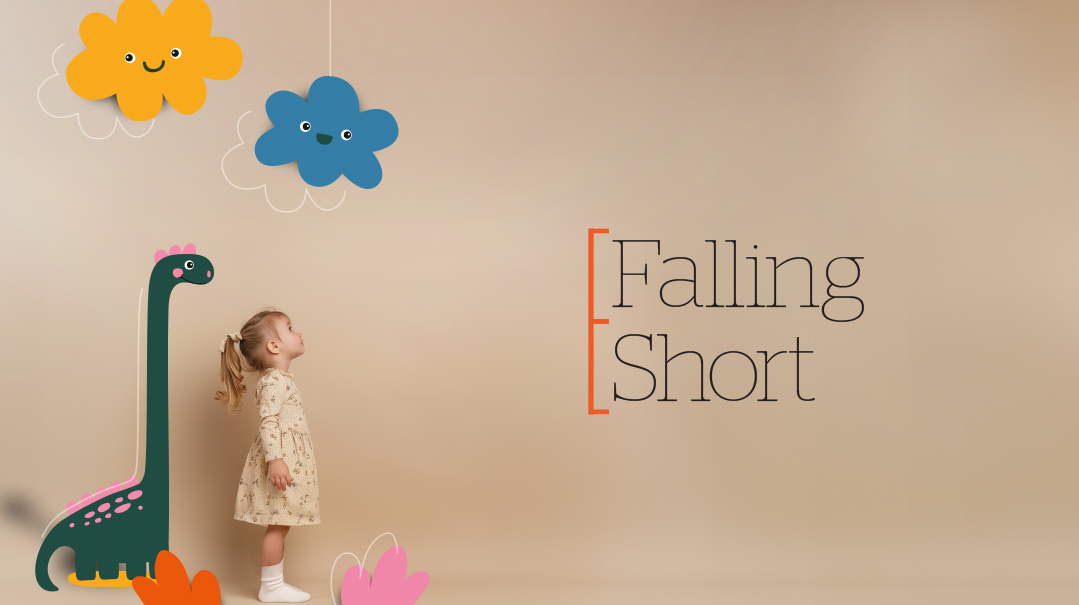Out of Sync
| April 2, 2024When a kid’s development is out of sync with their peers, what’s a parent to do?

D
ini was a little genius. An early talker, she could relate stories at 18 months old, a foreshadowing of her later academic high-achievement. When it came to learning, Dini knew it all, and nothing was ever hard for her. She was reading adult-level books in early elementary school, and not surprisingly, the first and second grades of school were a walkover.
But during third grade, things changed — for the worse.
Dini had a huge range of knowledge, sometimes knowing even more than the teachers. She was eager to share this, but instead, often ended up getting squashed by her teachers. On top of that, she had jealousy from peers to contend with. Much to the astonishment and dismay of her parents, “School became a struggle,” says her mother.
Then, one day, Dini suddenly declared she wasn’t feeling well. For a full three weeks she stayed home, her parents assuming she’d contracted some kind of low-grade virus. But they eventually realized that Dini’s physical symptoms were actually rooted in her unhappiness in school. They took her to be assessed by an educational psychologist, on whose test she scored at a 16-year-old level in a number of areas, even though she was only eight.
Asynchronous Development
Dini’s parents discovered there was a name for this situation — Asynchronous Development — in which children develop at an advanced rate across the emotional/social, intellectual, or physical spectrums, making them out of sync with their chronological age. Typically, a child who develops asynchronously is well ahead in one of these areas, but may struggle in other areas because of this lack of synchronization.
As the UK National Association for Gifted Children explains, “Where a child is very advanced in some areas, but their development is only typical of their age in others, this may lead to... misunderstanding, frustration and some behavioral issues.” For example, an academic high-achiever who is developing asynchronously is at times capable of mature reasoning and can astound an adult with the depth of their conversation, yet at other times he or she will throw a tantrum over a seemingly trivial issue and behave like a much younger child, confounding the adult.
Evelyn Wells, Dip PG Cert MBCAP, is an experienced Family and Child/Adolescent therapist who has seen a lot of kids with asynchronous development over the years, especially those with advanced intellectual faculties. “These children are very smart but often come across as know-it-alls. Because they grasp things so quickly, they get frustrated and find it hard to understand when others aren’t as quick. Socially, they may be sought after during exam time, when the phone doesn’t stop ringing, and then find they’ve been dropped.”
Suri, Batya, and Elisheva are other young women who developed asynchronously in different areas, and found school rough because of it.
Like Dini, Suri was way above her age in terms of intellectual development. “Suri is my third daughter,” says her mother. “As a baby she was actually slow to talk, but she caught up by the time she started school. I was relieved, and certainly didn’t dream she was above average intellectually. It was a friend’s mother who pointed it out to me. Suri’s brilliance was confirmed when she won a schoolwide Pirkei Avos competition in fourth grade, memorizing all six chapters, and earning accolades from her teachers.
“But at the same time, in the classroom, it wasn’t exactly smooth sailing. At a PTA meeting, the teachers complained to me that Suri was asking hundreds of questions, as well as showing off her own knowledge and not giving other girls a chance to participate.”
While Batya didn’t face challenges academically, that doesn’t mean her classroom experience was easy. Now a smiling, confident young mother of three children, her home is a magnet for the area’s kids, and her open, pleasant manner belies the challenges she faced growing up as a child who was different from her peers.
She’d always been heavier than average, and her physical differences were exacerbated by her advanced physical development.
In addition to feeling different from her peers, because she looked more mature than her age, the adults around her sometimes expected too much from her. Her mother would be surprised when Batya joined her younger siblings in rough-and-tumble play, but in reality, she was simply acting her age. Their adult relatives would expect her to sit and converse maturely, raising their eyebrows when Batya would giggle in a silly manner, or get into childish spats with her siblings.
Elisheva’s challenges came in the emotional realm. She’d always been a precocious child in terms of her maturity and emotional development, even as a baby; she scored above average in her eight-month-old baby developmental assessment, and started taking the lead with friends from a young age. With her natural self-assurance and confidence, peers naturally gravitated toward her and looked up to her.
The Struggle in School
Elisheva’s mother, Bracha, assumed that Elisheva’s maturity was a good thing — until she was suspended from school in first grade.
“It turned out she was challenging the teacher’s authority, talking to her as if she was on the same level,” says Bracha. Elisheva had been warned, along with another girl in the class, that if they didn’t improve their behavior, the school would call their mothers. “Her friend was crying when she heard that, but Elisheva just shrugged and declared, ‘So call my mother.’ It came across as chutzpah, and the school didn’t know what to do with her, so they suspended her.”
In her mother’s view, there was no intention to misbehave: Elisheva was naturally mature and a leader, seeing herself as on a par with adults. She just needed to be guided in the appropriate way to interact with adults.
After Dini’s assessment came back showing her advanced intellectual capabilities, “We met with the school and consulted educational experts, and were advised to move her up a class,” says Dini’s mother. “It doesn’t work for everyone, but in her case, it made things easier for a while. In the higher class, the schoolwork was more stimulating for her. She needed knowledge.” Socially, too, she fit in better in the higher class.
But things went downhill in high school. Her mother believes her brilliance translated into behavioral challenges. “There’s a fine line between confidence and chutzpah, and Dini ended up getting repeatedly punished for chutzpah,” her mother relates. For example, Dini would bluntly correct the teachers if they made a mistake or omission.
“I feel there’s sometimes a lack of awareness about unusually intelligent children,” observes Dini’s mother. “They need support and understanding, just like students with special needs.”
Suri’s mother found that her daughter had a better experience in school with teachers who were able to handle her unique intellect. “One teacher offered to answer Suri’s questions after class, rather than having her monopolize the lesson. I found that the better teachers were able to stretch Suri without stifling her, which would have just exacerbated the problem.”
As she got older, the impact of Batya’s physical maturity on her social status became more marked. She recalls the best time of her life as her kindergarten years. At that stage, her chubbiness was considered cute; the round-faced, sweet little girl received lots of positive attention. But by the time she started primary school, being larger than her peers was no longer seen as an asset. She was also moving and walking more slowly as a result of her extra weight, which led to challenges such as classmates not wanting to walk home from school with her, as it took too long.
Children can find differences in others hard to tolerate, and starting in fourth grade, Batya was bullied.
Parental Intervention
What can parents do to help their children navigate this complex set of circumstances?
Batya’s mother reports that she tried everything she could think of to deal with the bullying, including liaising with the school and enrolling Batya in social skills groups. “It definitely helped, but still, not fitting into the box of what’s normal can give a massive knock to a child’s confidence.”
A child who is advanced physically may face expectations to think like an older child or to manage their emotions in a way that they are just not yet able to do.
“This is a common issue. What’s tricky is because they look older, they start to get treated like they’re older. But they still have the internal mental workings of their normal chronological age,” explains Jane Mendle, a researcher at Cornell University.
Riki Rumpler MBACP concurs. “Remember, these kids are still nine or ten even though they look twelve or thirteen. Connect with them at the age where they’re at emotionally, rather than expecting them to know better. They don’t and they can’t.”
Suri’s mother had a similar experience dealing with the incongruence between her daughter’s intellectual abilities and her emotional and social functioning. “At home, despite her intelligence, she could be clueless about practical stuff. I sometimes got frustrated with her. She’s so intelligent, so smart, can’t she work out that the house is in chaos and she needs to lend a hand? I would often ask myself. I had to remind myself she’s just a kid, and like any kid, you’ve got to spell it out for them.”
Dini’s mother found she tended to speak to Dini in an adult-like manner, and had to remind herself that she was still a child.
Suri’s high-achieving nature also meant she drove herself very hard to achieve perfection, sometimes to excessive levels. For example, when doing exams, she was writing far too much, way above the required level, or when she did a school presentation, she would give it her all, without any boundaries. She had to learn that sometimes second-best is also okay.
“It’s important for parents to acknowledge and develop other aspects of these children, such as their fun-loving, playful side,” says Evelyn Wells. “Show the child they are valued for other attributes as well as their intellect. This creates a more rounded, less pressured child. Help them develop skills such as getting along with others, and coping with not being the best. Give them permission to show vulnerability, rather than putting them on a pedestal.
“Children with asynchronous social/emotional development can be born leaders, like Elisheva. However, this can lead to a feeling of pressure, and be linked to anxiety. Do find ways to value other aspects of their personality. Give them unconditional love, showing that you love them not only because they’re mature and sensible.”
“I did find intellectually stimulating stuff for her to do out of school as well, like taking her to museums and the library,” Dini’s mother says. “I even took her to meet a real-life author, and her bubby bought her lots of books, too. To develop her playful side, we got her a pet rabbit, which also did wonders for her emotionally.”
Says Suri’s mother, “I spent a lot of time talking to her. One thing that helped me was that while our family is very creative and smart, none of us can sing. I explained to Suri that for girls who aren’t academic, being in the classroom is like one of us having to perform in a choir. We discussed that different people have different talents. Also, over the years, my husband and I have always told the children that if you’re intelligent, it’s a gift, but you’ve got to put middos on the scale, too. And we’ve always made a point of rewarding the children for good middos rather than high test results.
“Suri resented it when teachers always partnered her with weaker peers for class activities. I encouraged Suri to create some challenge for herself, and not just rely on the teachers to stimulate her. For example, one time when the class had a competition to color pictures from the parshah, Suri also found appropriate pesukim for each picture and added these as captions.”
Batya’s mother tried all sorts of diets and ways to make her lose weight. These achieved very little. Batya would become frustrated and act up. Batya acknowledges that her mother made allowances for her, for example, spending more money on her clothes than on her siblings’ clothing, to try to make her feel good, and giving her more leeway with behavior. But Batya became increasingly self-conscious and unhappy — especially as her classmates made no such allowances.
For her aunt’s wedding when she was 13, Batya insisted she didn’t want a “mature dress” but one with as many wide petticoats as possible. Her mother thought this was a poor choice given her larger-than-average figure, but believes that Batya preferred younger, “cute” clothing generally because it reminded her of a beautiful time in her life.
“The more I tried to intervene, the worse things became,” her mother recalls. “I was trying to make things better for her, until I realized that I can’t — she has to take responsibility for herself.”
Like all teens — although somewhat intensified in the case of children with asynchronous development — Batya had to eventually learn to forge her own path. Her mother made a conscious choice to start taking a back seat at this stage, while still offering support from the sidelines, e.g., by paying for Batya to see a therapist to help her with her self-image and other issues, as well as a dietitian.
“Of course, I didn’t abdicate my responsibility as a parent. But I realized that it was her journey, not mine,” says her mother.
“Children with advanced physical development like Batya, and in particular girls, could have a fear of not being like everyone else,” explains Mrs. Wells. “A girl could present as not caring about her appearance, because of poor self-image, when really, she does care. She might want to hang on to her childhood, and choose to wear a ‘childish’ dress like Batya did. Parents need to understand where the child is coming from, and help her build up her self-image. They should be nonjudgmental. For example, even if you think the ‘childish’ dress was a poor choice, find something nice to say, like, ‘The color suits you.’ Be mindful, though, of why the child might be choosing this style dress and perhaps have a conversation about this on another occasion, as you want to avoid the choice of clothing further distancing her from her peers. As with all children, it’s a fine balance of allowing them to have choices even though you may not be happy with the outcomes or consider these wise.”
And Mrs. Wells adds, “As with all children, it’s extremely important to keep the lines of communication open.”
All’s Well that Ends Well
Adulthood usually looks kindlier upon children who develop asynchronously.
Dini did her SATs early and went on to seminary and then higher education. She’d earned a degree by age 20. “Despite the difficulties she faced during her school years, there are of course advantages to Dini’s intellect, too,” her mother acknowledges. “Besides her quick grasp of new concepts, she makes a fascinating conversationalist, and she had an easy time finding a job.”
Observes Suri’s mother, “We all know how schools celebrate smart kids. Homework was a walk in the park. She was self-motivated and didn’t need encouragement — she’s still like that today, as a young married woman, a real go-getter.”
And when Batya started high school, a ray of sunshine entered her life as she began to help out on Sundays at a school for children with special needs. Because of her own experiences, she had a high level of sensitivity toward others. The children were not at all judgmental, and they loved her for herself rather than judging by appearances. The staff was also very accepting. The school was her safe place, and the situation was a win-win: the school needed Batya’s help, and helping out there made Batya feel good. She’d always adored babies as they too are non-judgmental, and also became a sought-out babysitter for various relatives, whose children adored her.
Seminary turned out to be a positive experience for her. By then, her peers had all caught up with her, and although still physically larger than average, Batya carried herself well and attracted friends with her wonderful, warm manner. Her teachers viewed Batya as a happy, positive person. With her natural charisma, she developed a certain presence.
When marriage and motherhood followed soon after seminary, Batya was able to ease comfortably into her new role. She’d always tried to make others comfortable, and now it was a natural extension to build a warm, cosy nest for her family.
Not to mention all the others she and her husband have taken under their wings.
(Originally featured in Family First, Issue 888)
Oops! We could not locate your form.







